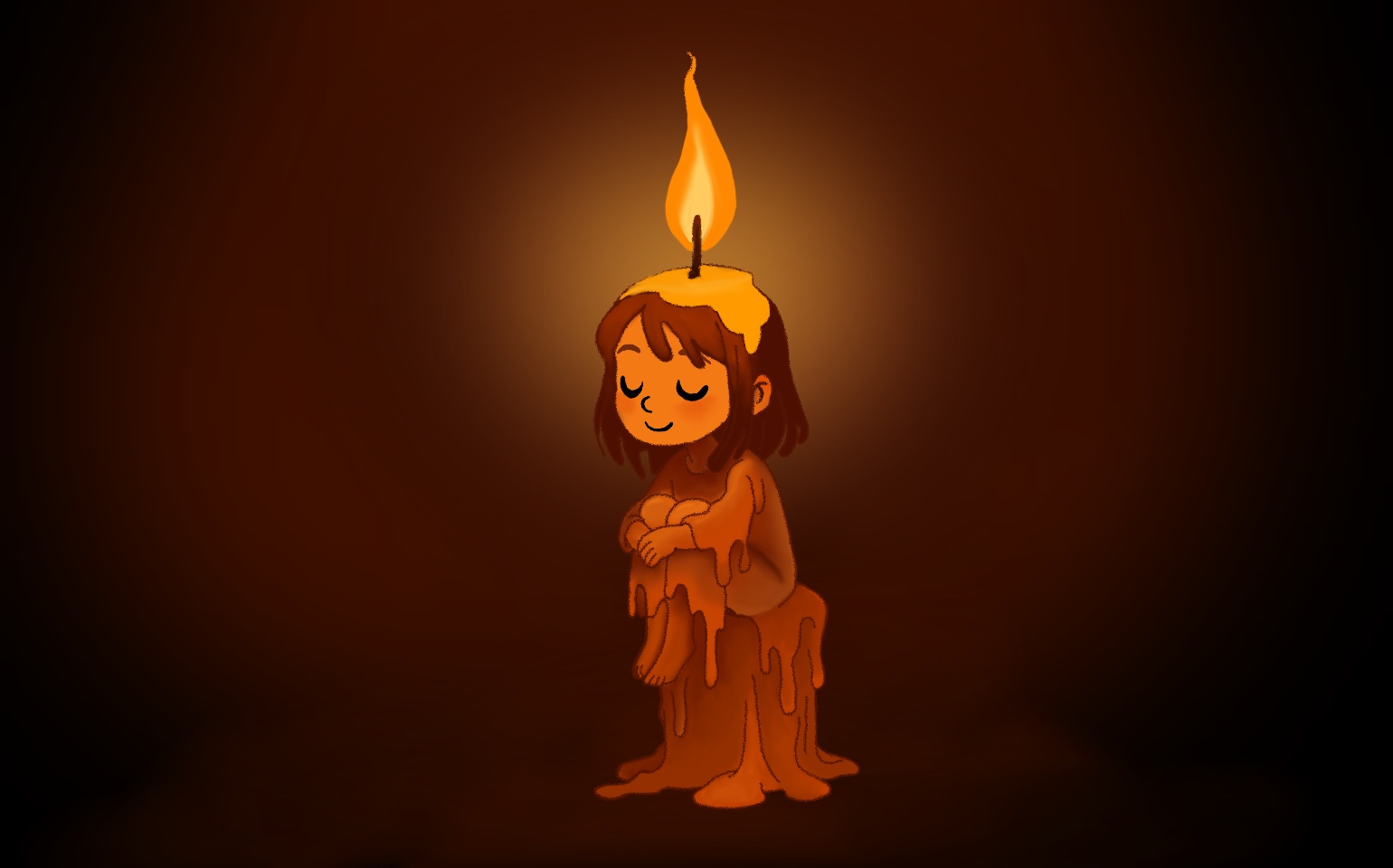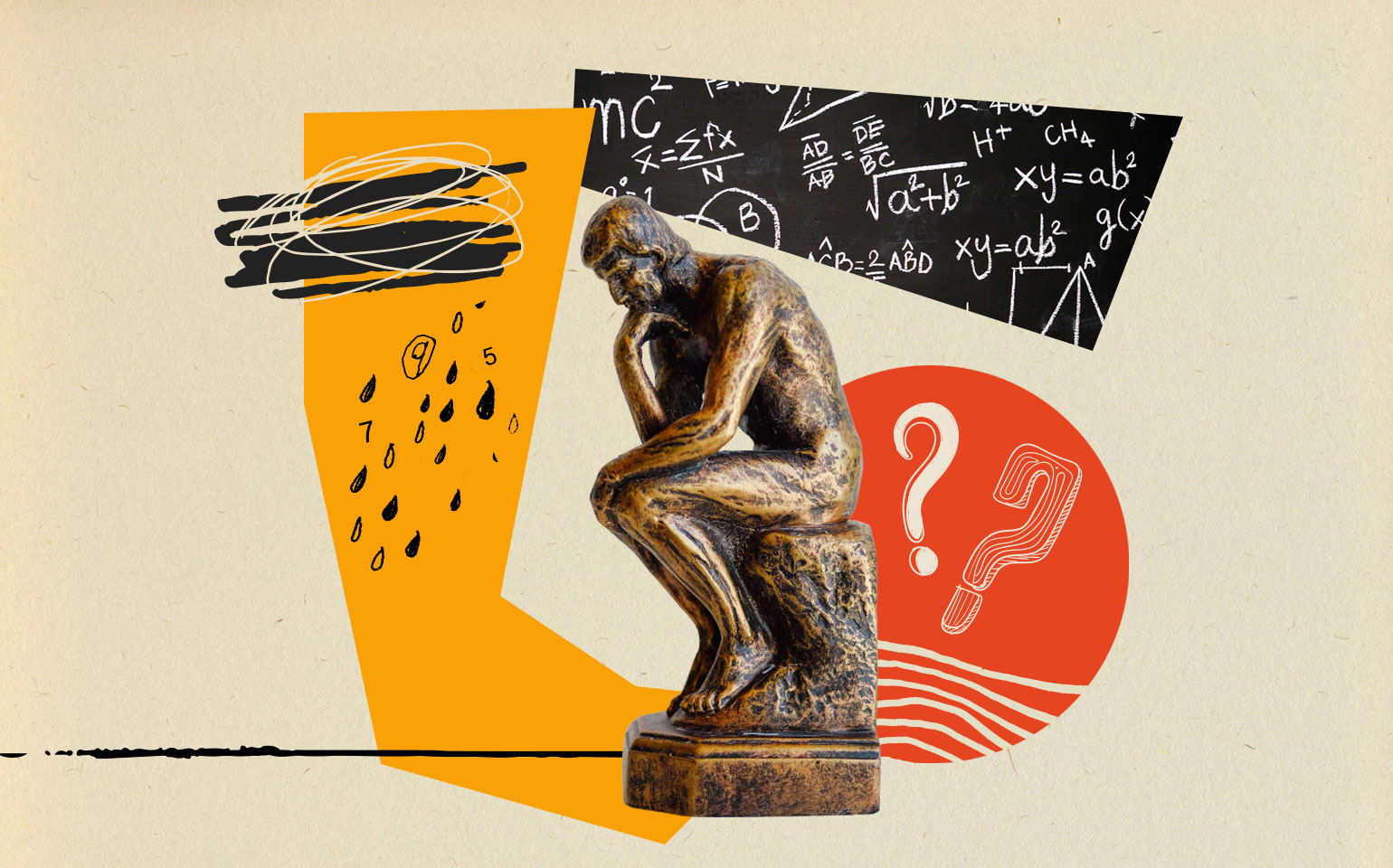
Burning Out, Finding Light
A fire on a candle burns and lights up the room, shining strong and bright. After some time, the wax and wick starts to wear down and the flame flickers and weakens. Soon enough, without any replenishment and protection, the flame gets smothered. How long until the fire lights up again? After all, even the brightest candles will dim and fade out without care and attention. Similarly, burnout resembles this candle metaphor: a person who constantly expends their energy without rest will eventually lose their spark.
Burnout is a state of physical, emotional, and mental exhaustion due to prolonged and excessive stress. A survey conducted by Harvard in 2023 states that about 27% of teens are burnt out. Multiple causes of this issue is because of academic, appearance, and/or future plans. Burnout rates tend to spike during midterms or finals where projects and exams pile up. This causes many students to feel pressured and anxious, myself included.
Just a few months ago, the last weeks before spring break was a huge stressor for me. School work, tasks that got prolonged, and pending assignments piled up, causing me to feel exhausted and irritated over minor inconveniences. This caused me a lot of trouble as not only were my grades depleting, but my relationships with family and friends got distant. By the end of a month, I could feel a complete lack of motivation and energy to initiate any conversations or even get myself to start on any work. The pressure of maintaining high grades was a constant reminder to my mind that I could not rest. Overthinking the future of potentially disappointing my loved ones made me self-isolate and even avoid talking with my friends. Although it felt too much to handle alone, I was too busy concentrating on the piles of work than reaching out for help.
Scary enough, I felt myself stuck in this dreadful loop of waking up every morning just to repeat the cycle of everyday life. At school, I would drag myself from class to class, waiting for school to end, just to be met with irritation that there was more homework to be added to the pile.
At night, after overcoming my constant procrastination and completing my work, I always felt like there was never enough time left for myself. This led to nights of gaming, quiet hobbies, or even doing nothing at all past midnight. Doing all those hobbies never quite gave me any satisfaction. I would sit through the night drowning in guilt that I would wake up more tired than ever. That period of time felt more of a temporary escape and longing for the day to not end before the cycle repeats again. Being hyphenate, I could tell that was unhealthy and damaging for my body, but I did not have enough energy to even bring myself to bed. Weekends were just as bad as the guilt of doing nothing when I had a long list of tasks to accomplish overwhelmed me. Finding the time to just “rest” with no stress seemed like a far away dream.
The worst part is when people confuse this feeling with laziness. Being burnt out and being lazy are two completely different things. Being lazy is a discard in responsibilities because of a lack of interest or unwillingness to put in effort while being burnt out is an inability to get a task done due to feeling too drained. Times when people accused me of being lazy really confused me and had me doubting if I was truly tired or just lazy. In the end, after a steady reflection, I recognized that if I was truly lazy, I wouldn’t be guilty of disregarding these tasks and being self-deprecating for not having enough motivation to get an assignment done. Understanding the difference between these two is immensely important.
Everyone is going through different experiences in their life, and assigning someone as just “lazy” without confirming their state of health is disparaging their emotions and mental well-being.
Several symptoms of burnout that can be recognized include physical problems like fatigue, headaches, and insomnia. Some mental symptoms vary from reduced concentration to constant anxious thoughts, and some emotional symptoms range from irritability to detachment. Recognizing these symptoms and knowing when to start taking action is the first step in improving and recovering from burnout.
When spring break came around the corner, the relief because of time to catch up on work and sleep dawned upon me. The anticipation of not needing to feel guilt over doing nothing over the next week gave me solace. That is when I had the time to finally sit down and reflect on the stressful days before the break. Finally becoming aware of the burnout I went through and the numerous problems it created for me, I started noting down ways to minimize the chances of another one of these huge burnouts happening again. These strategies are for overcoming burnout, but many of these can also be applied to everyday life as well.
The most important step is prioritizing yourself before anything else. It may sound simple, but this includes taking time for yourself to have a moment of reflection. Whether it is connecting with loved ones or spending time alone to recharge your social battery, both are an efficient way of maintaining a well balanced lifestyle that puts yourself first. Another important step is finding and addressing the root of the problem. Burnout is mainly caused by a stressor that occurs frequently, causing you to feel overwhelmed, so a solution to solve this is by delegating some tasks to others and taking breaks. It may be difficult to ask for help in the beginning as many people tend to want to shoulder all the work independently, but reaching out for support is very helpful and will lessen the workload.
Asking for help is not a sign of weakness, but rather a sign of self-awareness of one’s strengths and willingness to learn and grow.
Protecting your time and energy is essential when facing burnout because once you run out of fuel, it becomes difficult to restart the whole engine again. Finally, I find having a slight change towards a healthier lifestyle tends to help in the long run. Some examples are eating a bit healthier, going out to take a walk, or even journaling; those can help ease your mind and boost your overall mood. Simple changes may seem small at first, but doing them consistently will provide a positive drastic change in the long term.
When we push ourselves beyond our limits without time to recharge, we risk our flame becoming wiped out. It is vital to recognize when we need to pause and refuel. Only then, can we continue to shine brightly without being extinguished. Many of us have been busy all our lives. It’s time to practice slowing down.



